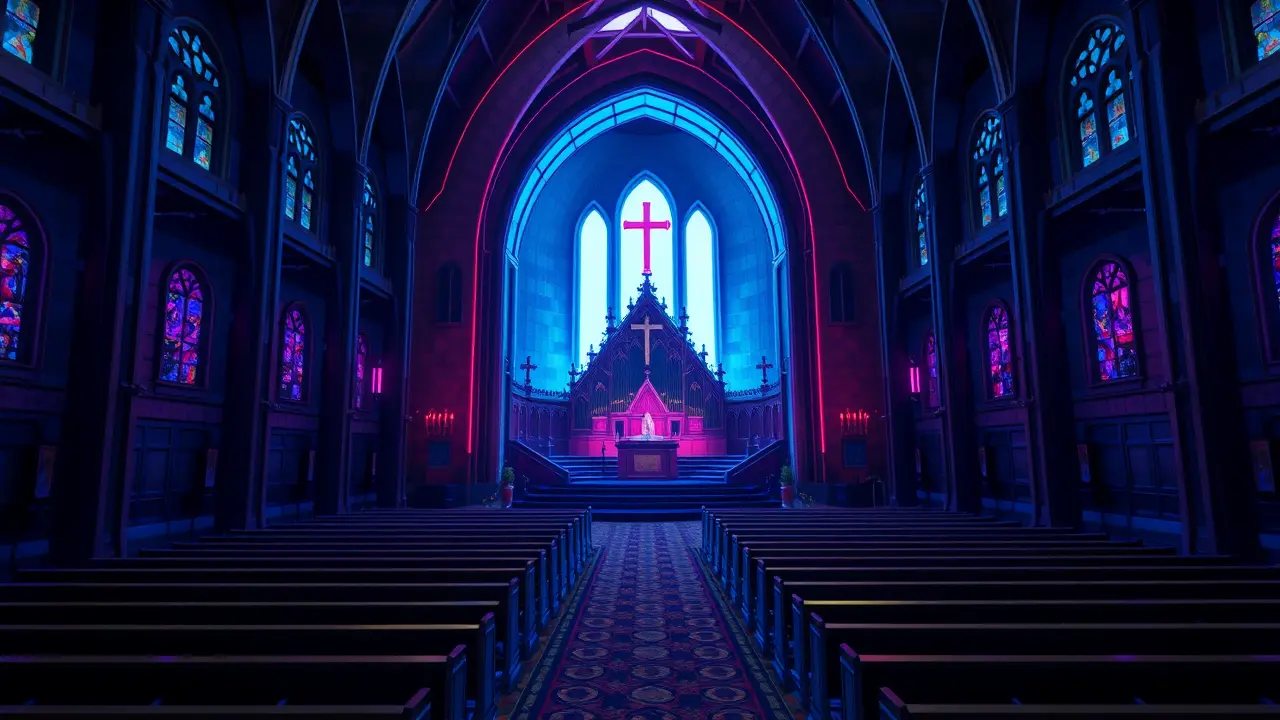Nick Cave Debuts First VR Monument in Detroit Church
In a move that feels less like a conventional art opening and more like a sacred, avant-garde hymn, the artist Nick Cave—not to be confused with the brooding rockstar—has orchestrated his first foray into virtual reality, planting a digital monument squarely within the hallowed, reverberant space of a former Detroit church. This isn't just another tech demo; it’s the anchor piece for 'Seen/Scene,' a new exhibition he co-curated at the Shepherd, and it resonates with the same complex, soul-stirring frequencies as his legendary 'Soundsuits.' Imagine walking into that vast, echoing nave, where light once streamed through stained glass onto pews, and instead being enveloped by a VR-generated vision that somehow feels both futuristic and ancient, a digital ghost in the machine of a building that has spent decades collecting prayers. Cave has always worked in the liminal space between ritual and spectacle, crafting wearable sculptures that are part armor, part ceremonial garb, designed to obscure identity and provoke questions about race, violence, and community.This VR piece is the logical, breathtaking evolution of that practice, translating his tactile, kinetic artistry into an immersive, three-dimensional world you don a headset to enter. It’s a bold composition for a city like Detroit, a place with its own symphony of ruin and rebirth, where the skeletons of old churches stand as monuments to a different era of faith and congregation.By choosing this venue, Cave is conducting a dialogue with the city’s history, using the church not merely as a gallery but as an essential instrument in his orchestra, its acoustics and aura fundamentally shaping the VR experience. The very act of placing a cutting-edge digital artifact inside a structure built for spiritual transcendence creates a powerful dissonance, a clashing of epochs that somehow produces a new kind of harmony.Think of it as the art world's equivalent of a sampled gospel choir in a hip-hop track—it borrows the soul of the past to create something utterly contemporary. This is where the curation of 'Seen/Scene' becomes so critical; it’s not a random grouping of works but a carefully arranged setlist, with Cave’s VR monument as the headlining act, setting the tone and theme for everything else.The broader context here is the art world's long, complicated, and often clumsy courtship with technology, from early web art to the NFT craze, but Cave sidesteps the gimmickry that often plagues such ventures. His work has always been about the body, about movement, about the raw, physical presence of the performer, so his embrace of the supposedly disembodying medium of virtual reality is a fascinating counter-melody.He’s not abandoning the physical; he’s expanding its definition, asking us to consider how a digital space can hold just as much emotional and spiritual weight as a cathedral. Expert commentary would surely highlight how this continues the legacy of artists like James Turrell, who also uses light and space to create quasi-religious experiences, or the immersive installations of Pipilotti Rist, but Cave’s particular genius is his grounding in the funk and grit of urban life and his deep connection to the rituals of the African diaspora.The possible consequences are profound: this could signal a new path for public art in the 21st century, where monuments are no longer static bronze statues but living, breathing, digital ecosystems accessible from anywhere, yet inextricably tied to a specific, resonant location. It redefines what a church can be in a secular age—no longer a house for a single god, but a sanctuary for collective, technological wonder. As the lines between the real and the virtual continue to blur, Cave’s Detroit church stands as a beacon, a place where the old hymns of brick and mortar meet the new psalms of pixels and code, creating a symphony for the senses that you have to experience to believe.
It’s quiet here...Start the conversation by leaving the first comment.
© 2025 Outpoll Service LTD. All rights reserved.
